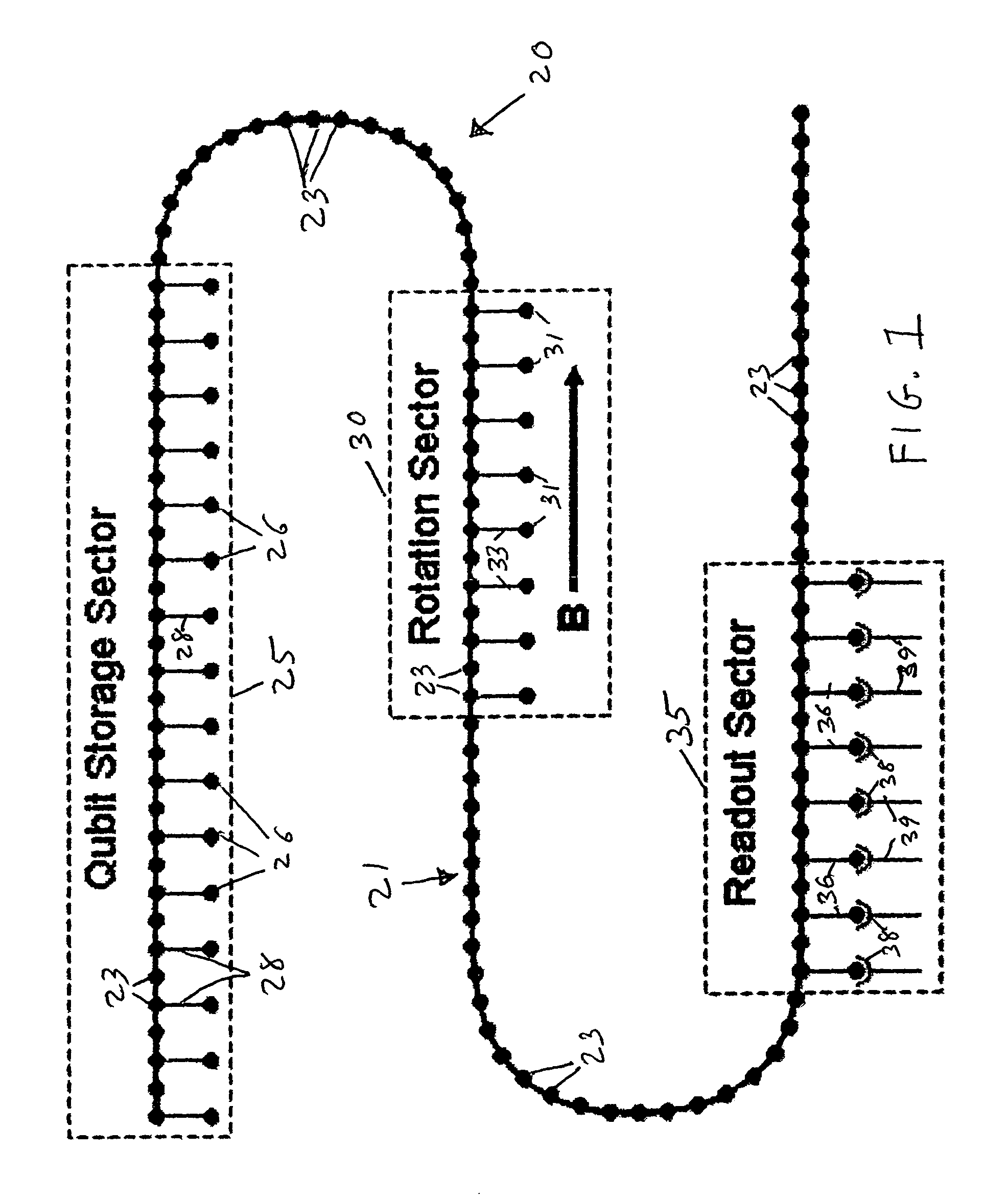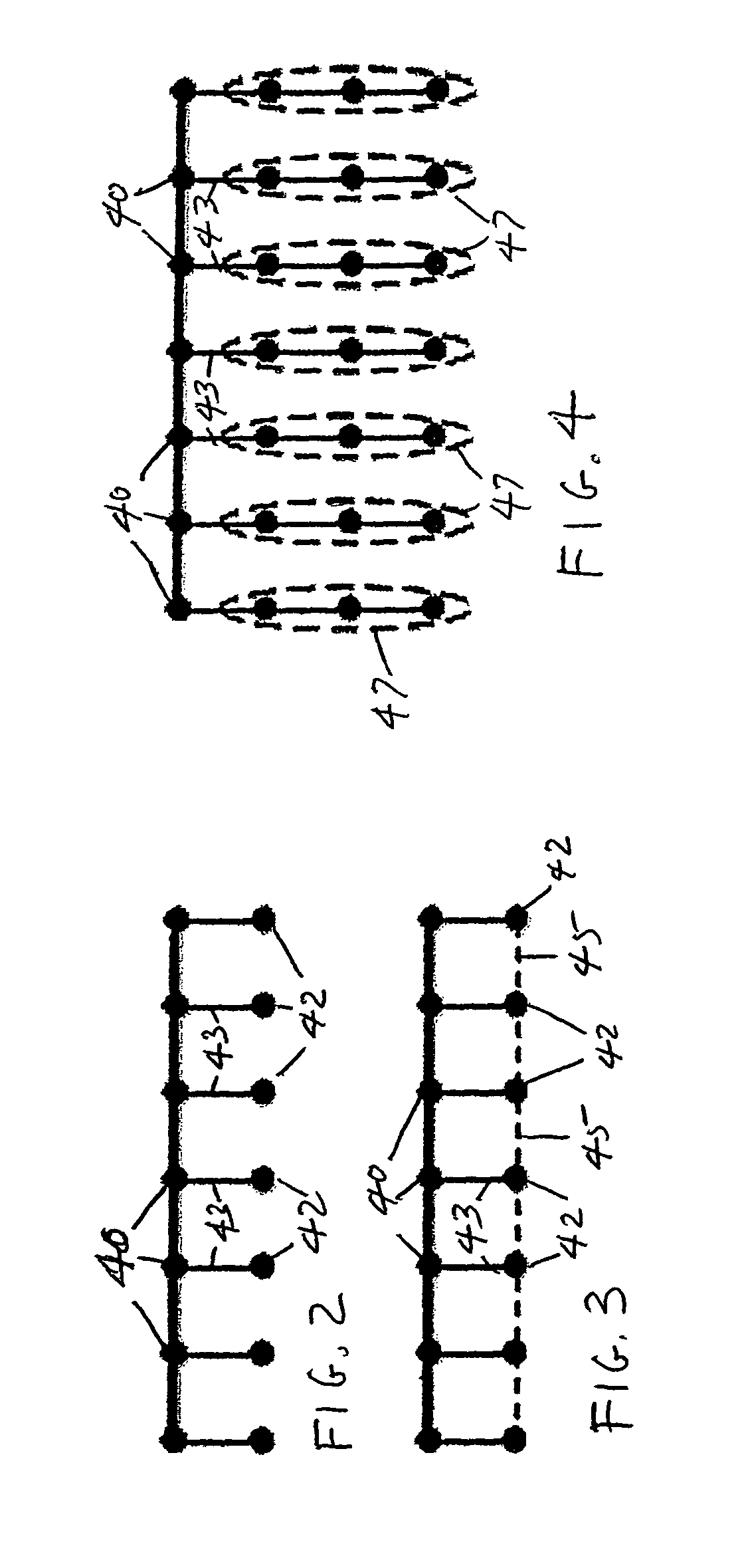Spin-bus for information transfer in quantum computing
a quantum computing and information transfer technology, applied in computing, semiconductor devices, instruments, etc., can solve the problems of long-range coupling, putting error correction out of reach, and affecting the algorithm with sub-exponential speedup, and achieve excellent decoherence properties and maximize bus speed
- Summary
- Abstract
- Description
- Claims
- Application Information
AI Technical Summary
Benefits of technology
Problems solved by technology
Method used
Image
Examples
Embodiment Construction
[0024]A simplified view of a spin-bus QC architecture in accordance with the invention is shown generally at 20 in FIG. 1. The QC architecture 20 may be implemented in semiconductors as well as other structures as discussed further below. The QC architecture 20 includes a main spin bus 21 formed of a string of qubits (i.e., the “bus qubits”, e.g., quantum dots) 23 which are always on and which are strongly coupled together. Information bearing working qubits can be selectively coupled to the qubits of the bus to receive information from or provide information thereto. For purposes of illustration, the spin bus QC architecture 20 includes a qubit storage sector 25 having a series of qubits 26 which are coupled to the bus 21 by couplings 28 which can be turned on and off electronically. A rotation sector 30 has qubits 31 which are selectively coupled to the spin bus 21 by couplings 33 which can be turned on and off electronically and which can be affected by a magnetic field applied f...
PUM
 Login to View More
Login to View More Abstract
Description
Claims
Application Information
 Login to View More
Login to View More - R&D
- Intellectual Property
- Life Sciences
- Materials
- Tech Scout
- Unparalleled Data Quality
- Higher Quality Content
- 60% Fewer Hallucinations
Browse by: Latest US Patents, China's latest patents, Technical Efficacy Thesaurus, Application Domain, Technology Topic, Popular Technical Reports.
© 2025 PatSnap. All rights reserved.Legal|Privacy policy|Modern Slavery Act Transparency Statement|Sitemap|About US| Contact US: help@patsnap.com



